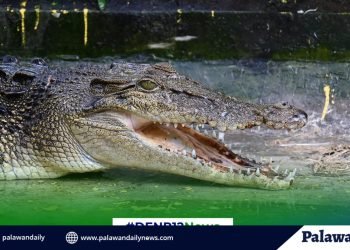An internationally-known scientist underscored the importance of mangroves in the country’s food security in an effort promote the protection, conservation and management of mangroves in addressing the country’s ecological balance while protecting its importance as source of food.
Mangroves, Dr. Jurgenne Primavera emphasized in her online lecture, are considered as the most important components of the coastal ecosystem and among the most productive and biologically complex ecosystems on the planet.
In her Mangroves 101: Webinar Series Episode 1 (Biology and Uses), Primavera, an internationally-recognized mangrove scientist and currently the Chief Mangrove Advisor of the Zoological Society of London (ZSL) said that the abundance of fish and shells in zones where mangroves abound is a bio-indicator of the richness of the diversity in the mangrove and coastal area.
Dr. Primavera said that gleaners, also known as shellfish gatherers and common in the country’s coastal communities, represent the food security in rural Filipino.
One of the shellfishes that thrive in mangrove areas and with high economic value is the Anodontia philippiana locally known as “imbao”.
“It gives a very good food and can be eaten raw as kinilaw,” she said.
The mangroves’ fallen leaves become food for bacteria and microbes, which convert fallen material into dead organic matter known as detritus. In mangrove areas, the crustaceans and bivalves also abound. These are invertebrate species such as crabs, shrimps, barnacles and mussels that feed on the detritus.
The small fish as well as wading birds feed on many detritus-eating animals while the larger fish enter the mangroves with the tide in search of food, eating small fish and invertebrates. These are indicators of healthy mangroves, and teeming with variety of marine life.
In her video presentation, the ecosystem services of mangroves have totaled to US$14,66 to $16,142 per hectare, because of its ecosystem services as raw materials and food, coastal protection, erosion control, maintenance for fisheries and carbon sequestration.
Aside from food, the significant uses of mangroves include as medicine, shelter (nipa shillings as roofs) and coastal protection against storm surges. It also serves as vegetable, flavors, tea leaves, seasonings and even as fodder/ forage to animals.
She said that in Arabian desert, camels go down to the sea for Avecinnea Marina. In Sri Lanka and even in Cebu province, cows go down to eat leaves of mangroves. In Palawan, she said that she saw goats foraged with Soneratia species.
“Pagatpat are delicious to the goats. I have seen this in Palawan. They love the leaves of mangroves,” she said.
Primavera said that Scyphiphora hydrophyllacea are abundant in Manila. In fact its name came from the its local name as “nilad” mangroves.
The Tagalog referred as “there are nilad”, or “may nilad” which later evolved and the country’s capital known as Manila or Maynila obviously derived from “may nilad” or “nilad” mangroves. Aside from Manila, others towns are also named after mangroves, these towns are found in Iloilo City, Antique, Surigao, Siquijor, Agusan del Norte, Guimaras, Camarines Sur, among others.
“There are places named after mangroves all over the country. It showed that mangroves are very abundant and very diverse long time ago in the Philippines,” Dr. Primavera said.
























Discussion about this post